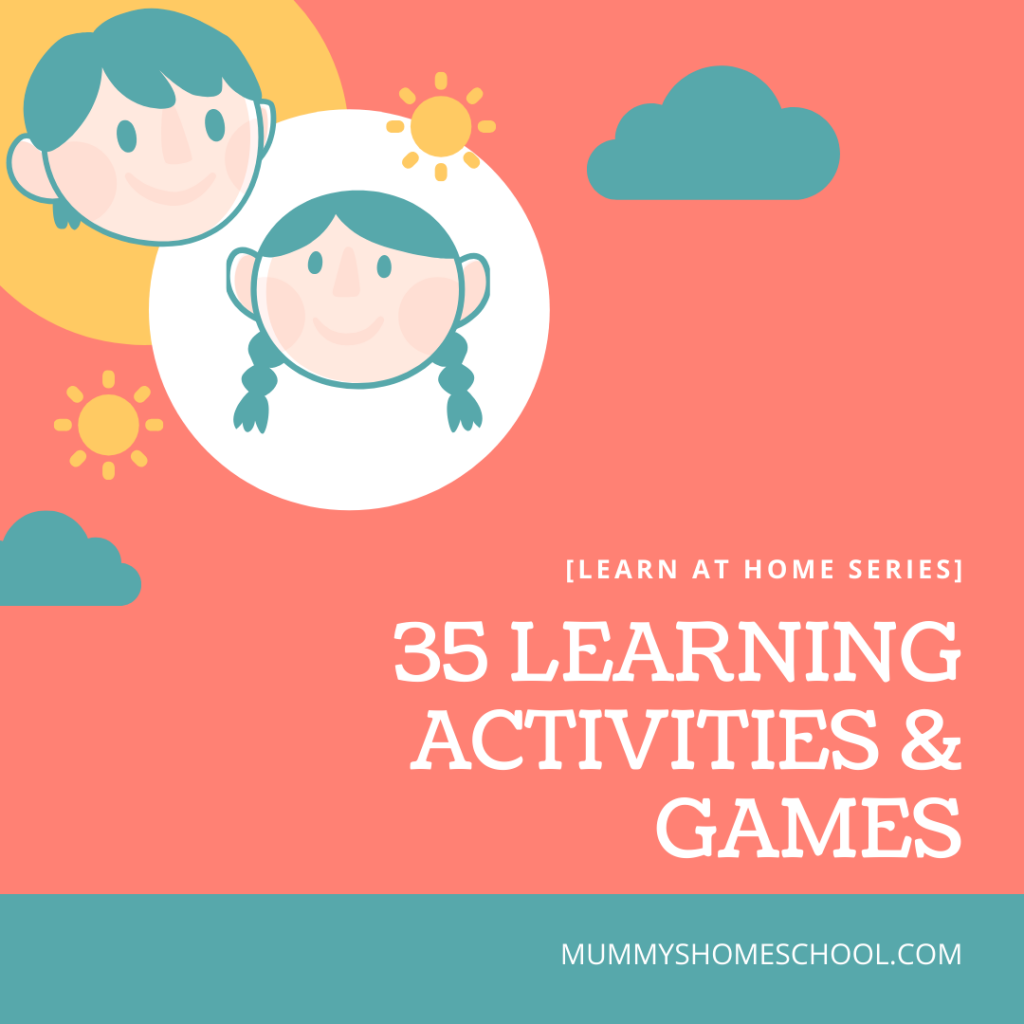Need ideas on what meaningful activities to do with the children during school closure?
Here’s what we’ve been busy with over more than 40 days at home!
Each activity is connected to meaningful learning objectives and is generally simple to put together.
It’s more about giving you ideas to make the best use of what you already have at home.
Read on…
This is part of our series at [Learn at Home] During Covid-19 School Closure
Feel free to jump straight to the section you like:
1. Sports
1.1. Morning walk
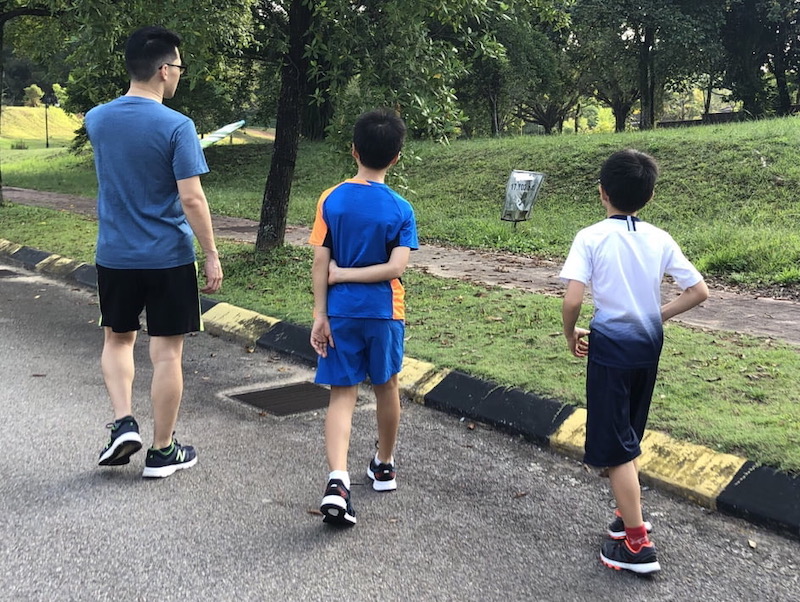
When the movement restrictions are less strict, we like to start off each morning with a morning brisk walk.
Along the way, there may be teachable moments for math or science.
Learning objectives:
- Physical / health: motor skills, stamina
- Science: observe plants & animals
- Math: applications
1.2. Cycling
The boys love to cycle. But I’ll get a heart attack watching them, so Daddy supervises them.
Learning objectives:
- Physical / health: motor skills, stamina
- Practical life: cycling, independent transportation,
- Practical life: road safety
1.3. Laundry basketball
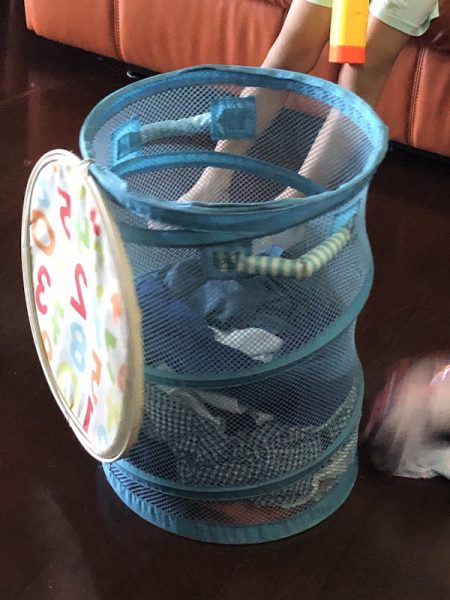
After morning exercise, aim all the laundry into the baskets!
Learning objectives:
- Physical / health: motor skills
- Practical life: tidying up
2. Creativity & Projects
2.1. Drawing
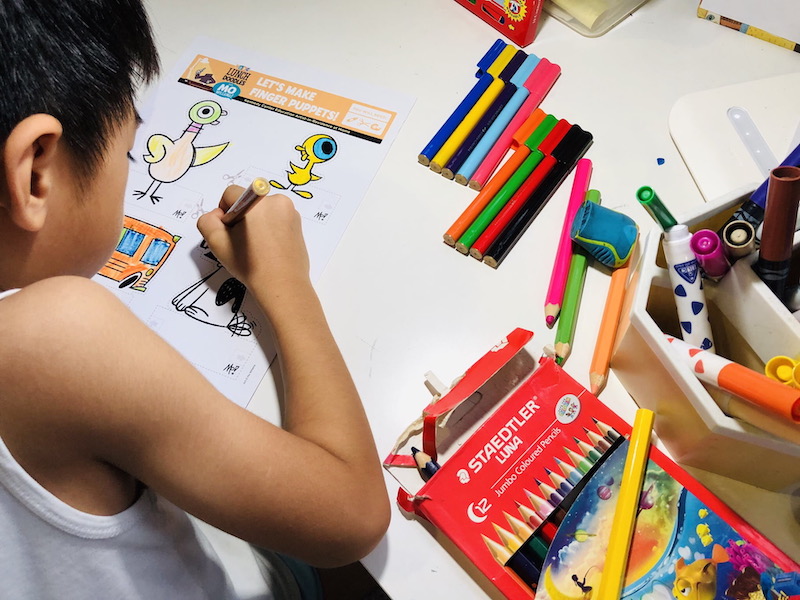
This can be guided or free-form.
Demonstrate how to work at a designated area and how to clean up.
When the child succeeds, then offer a new medium the next time.
Introduce a variety of mediums including pencils, coloured pencils, crayons, oil pastels, markers, etc.
For the really young ones, our favourites are Crayola washable markers.
Offer a variety of paper and coloured paper.
Learning objectives:
- Pre-writing: fine motor skills
- Language: colours
- Practical life: cleaning up
- Art: creativity
2.2. Drawing with chalk
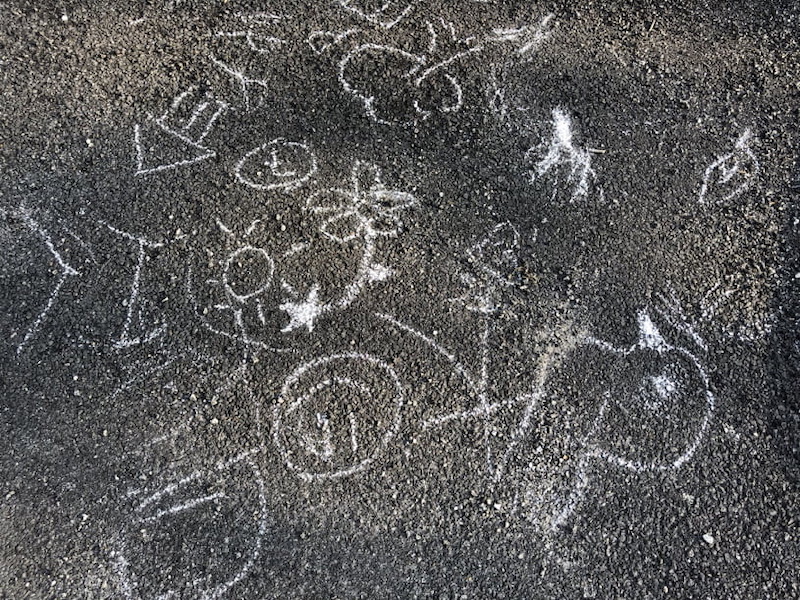
Sidewalk plus chalk. Kids love it.
Learning objectives:
- Pre-writing: fine motor skills
- Language: colours
- Art: creativity
2.3. Painting
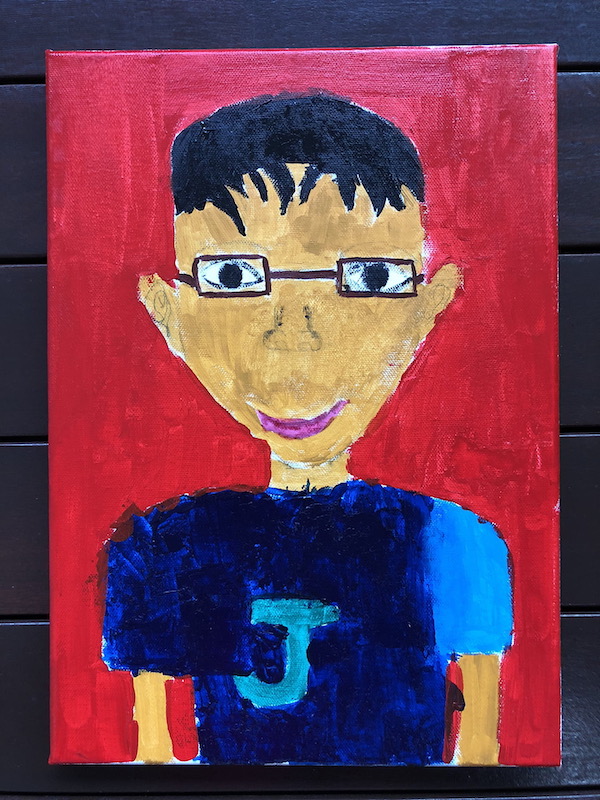
Similar to drawing above, demonstrate how to clean up.
Then offer a variety of mediums such as poster colour, water colour and acrylic paint.
Again, for the really little ones, we love Crayola washable paints and finger paints.
Also offer a variety of paper (of different size, thickness, texture) and canvas.
Learning objectives:
- Pre-writing: fine motor skills
- Sensorial: size, colours & shapes
- Practical life: cleaning up
- Art: creativity
2.4. Kinetic sand
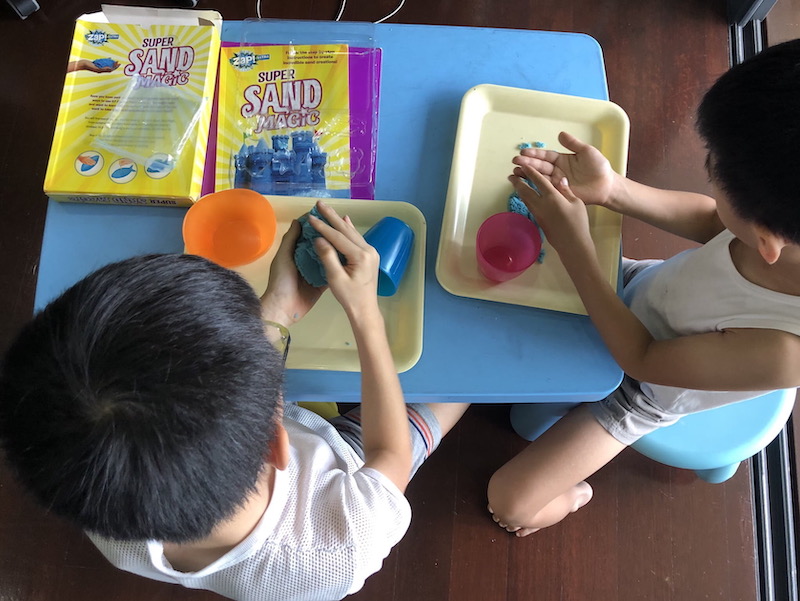
This keeps the younger kids quiet for a good stretch of time and is super-easy to clean up.
Learning objectives:
- Pre-writing: fine motor skills
- Sensorial: size, colours, 2D & 3D shapes
- Practical life: cleaning up
- Art: creativity
2.5. Crafts

My younger boys like to make crafts out of recycled cereal boxes, packaging, toilet paper rolls and paper masking tape.
Robots, houses, or anything else they imagine.
Learning objectives:
- Pre-writing: fine motor skills, cutting, tearing, pasting
- Language: size, colours, 2D & 3D shapes
- Practical life: cleaning up
- Art: creativity
2.6. Origami
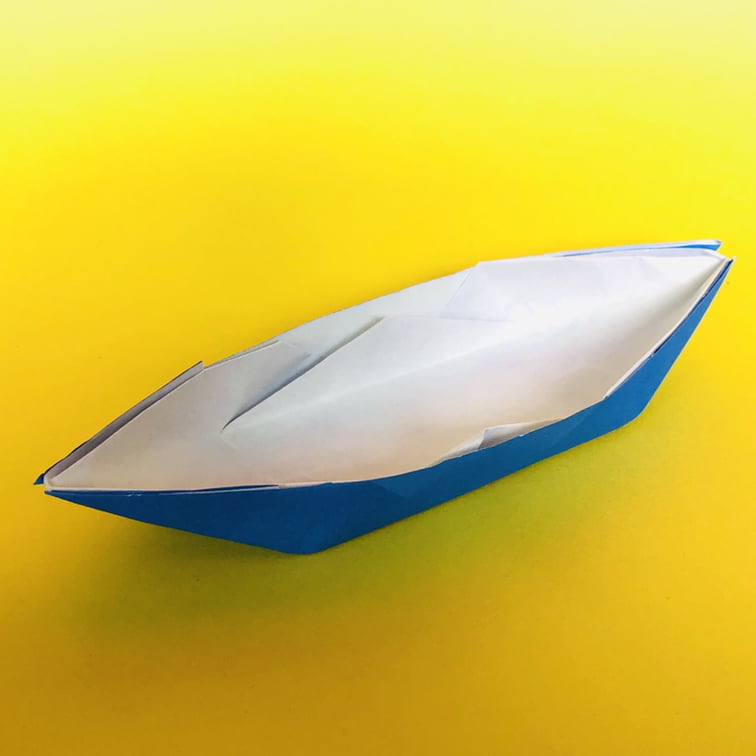
We also love folding origami, which can be extended many lessons beyond craft.
Learning objectives:
- School readiness: following oral / visual / written instructions
- Memory practice
- Sensorial: size, colours & shapes
- Pre-writing: fine motor skills (folding)
- Mathematics: geometry
- Art: creativity
For more teaching ideas, check out this post on origami boat.
2.7. Junior Engineer
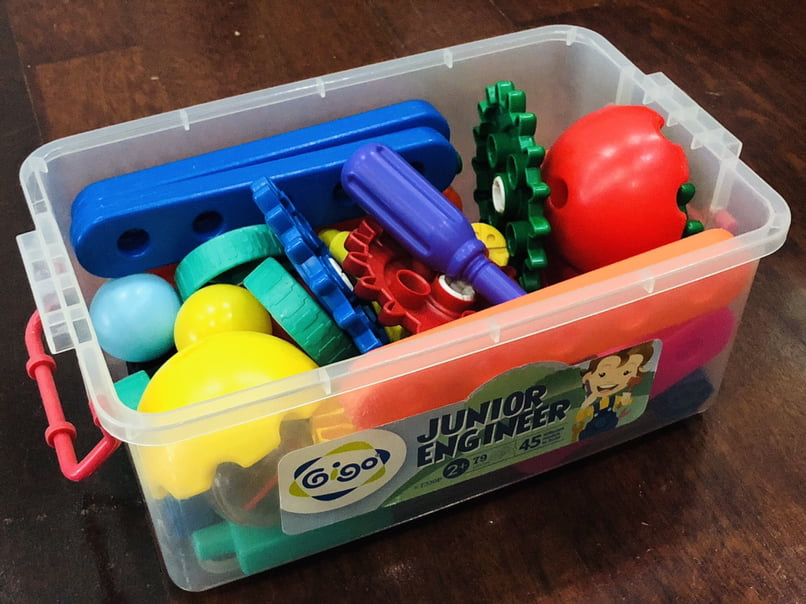
This is one of kids’ favourite construction toys from 2+ to 7+ years old.
Great for strengthening finger muscles in preparation for writing, and spatial skills for mathematics.
Learning objectives:
- School readiness: following oral / visual instructions
- Pre-writing: fine motor skills (pincer grasp)
- Memory practice
- Sensorial: size, colours, 2D & 3D shapes
- Practical life: hammering, screwing, cleaning up
- Mathematics: counting
- Science: balancing, rolling tracks, gears
- Art: creativity
2.8. LEGO DUPLO®
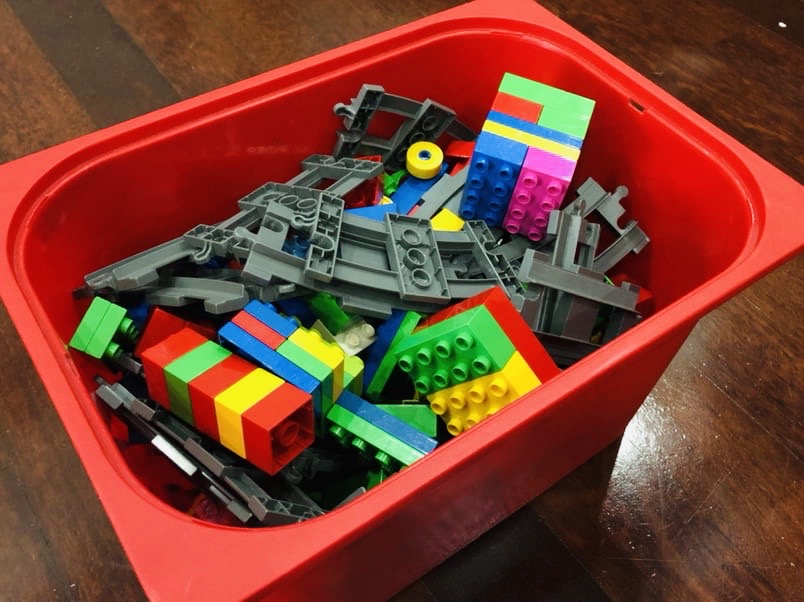
Another home favourite from 1+ to 6+ years old.
To build endless projects while developing finger muscles and spatial skills.
Learning objectives:
- School readiness: following oral / visual instructions
- Pre-writing: fine motor skills (pincer grasp)
- Memory practice
- Sensorial: size, colours, 2D & 3D shapes
- Practical life: cleaning up
- Mathematics: counting
- Science: balancing
- Art: creativity
2.9. LEGO®
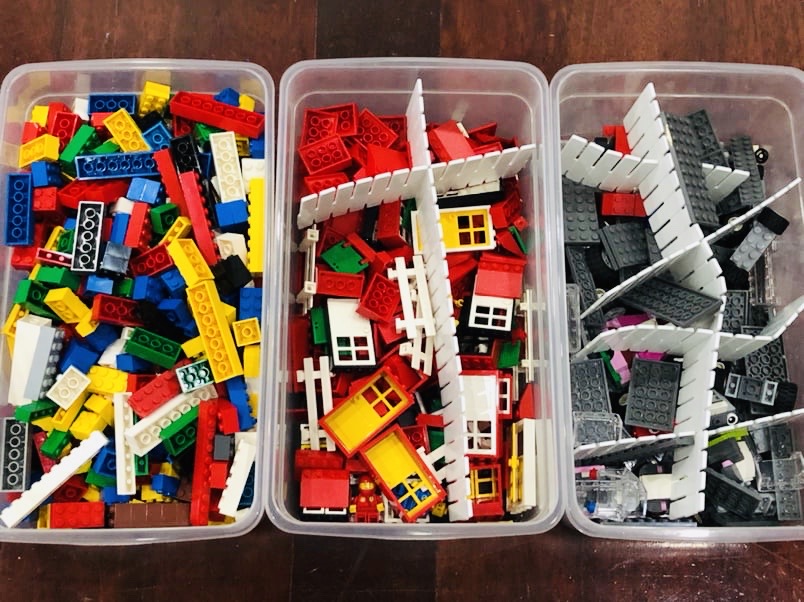
When the child is older (around 5 years and above), I offer him assorted bricks, windows, doors, roof, vehicles parts and figures.
Compared to themed sets, this allows him to be more creative.
Learning objectives:
- School readiness: following oral / visual / written instructions
- Pre-writing: fine motor skills (pincer grasp)
- Memory practice
- Sensorial: size, colours, 2D & 3D shapes
- Practical life: cleaning up
- Mathematics: counting
- Science: balancing
- Art: creativity
3. Practical Life
3.1. Cooking
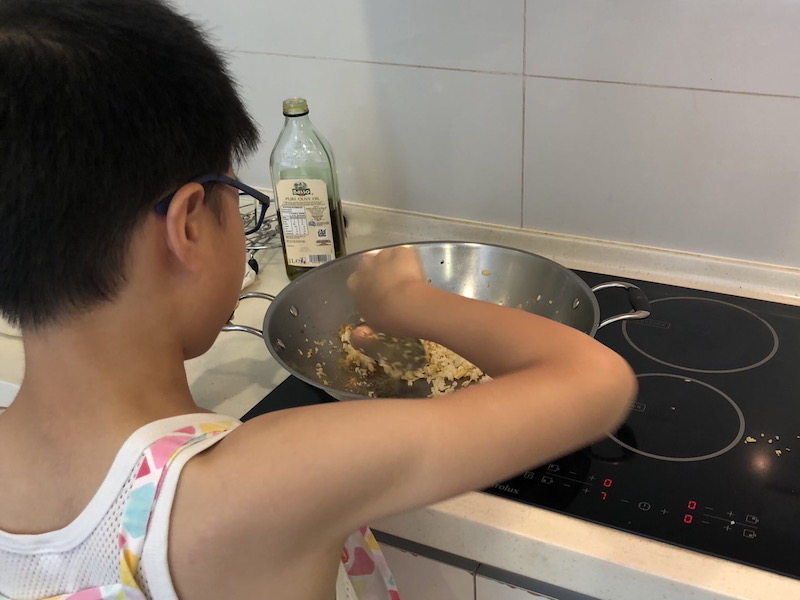
This is a very important life skill, preparing the child for independence, while learning about nutrition.
Learning objectives:
- Practical life: hygiene, washing, cutting, various cooking methods, cleaning up
- Language: reading (recipe)
- Mathematics: counting, weighing, measuring, converting, ratio
- Science: nutrition, meal planning, heat, safety, how kitchen appliances work, chemistry
3.2. Tidy up Personal Belongings
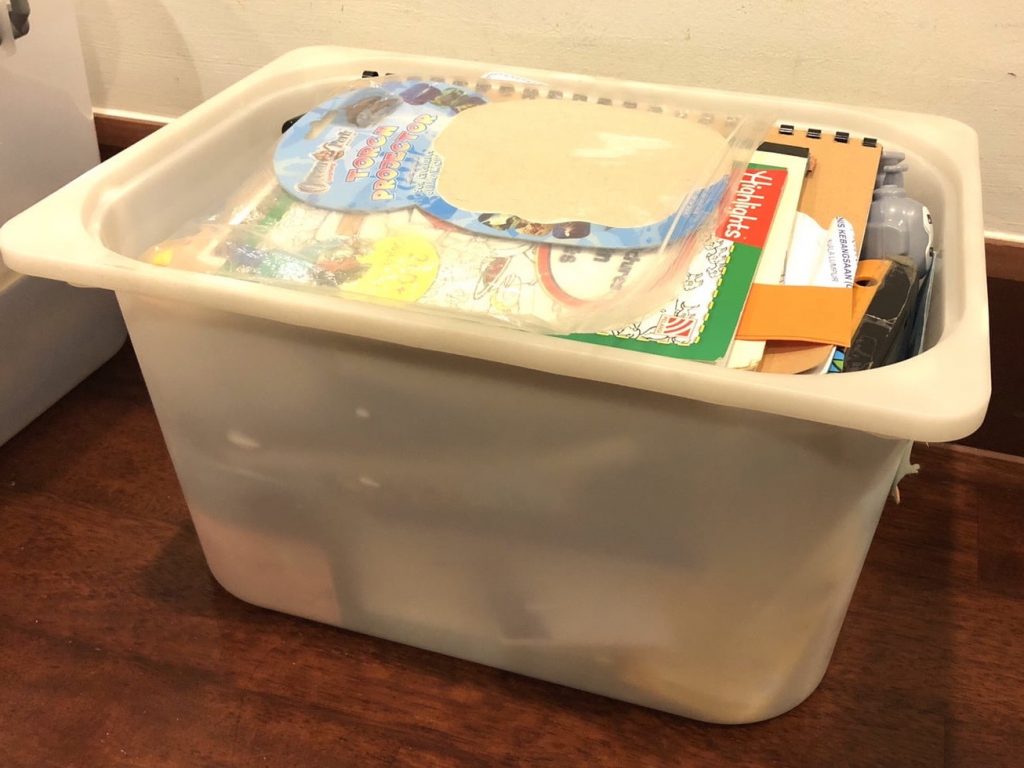
Each child gets a drawer and/or box to hold his personal treasures. It’s called his “special place”.
After some time, the “special place” tends to become a “messy place”.
So during weekends and school holidays, they will have to tidy any “messy place” up. It’s simple, just sort the items into 3 sections:
- Clean and keep
- Donate or recycle
- Throw
Learning objectives:
- Practical life: organisation, cleaning up, mindfulness
- Science: waste management, recycling
3.3. Housework
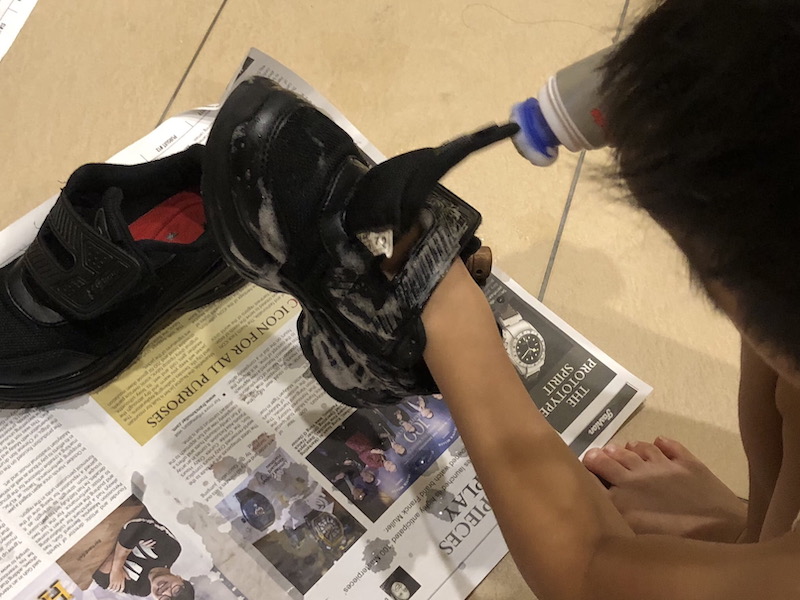
With parents busy working at home, now is the best time for children to help out with household chores.
For our purpose, household chores include those that benefit the entire family.
This means that cleaning the child’s own “special place”, work desk and shoes are his personal work, not household chores.
Housework that children can help out in:
- Meals: Set the table, put away dishes, wash dishes after snack time
- Laundry: sort out, hang, fold, keep
- Wipe the learning areas
- Clean shoes
- Sweep & mop the floor
Learning objectives:
- School readiness: following oral instructions & demonstrations
- Memory practice
- Practical life: cleaning up, teamwork
- Motor skills
3.4. Write to-do list


By investing 5 minutes to write a to-do list each morning, the child becomes more mindful of his time management.
Once his to-do list is ready, he chooses which task to start with.
Having some freedom of choice keeps him motivated.
Learning objectives:
- School readiness: following oral instructions & demonstrations
- Memory practice
- Practical life: cleaning up, teamwork
- Motor skills
3.5. Gardening
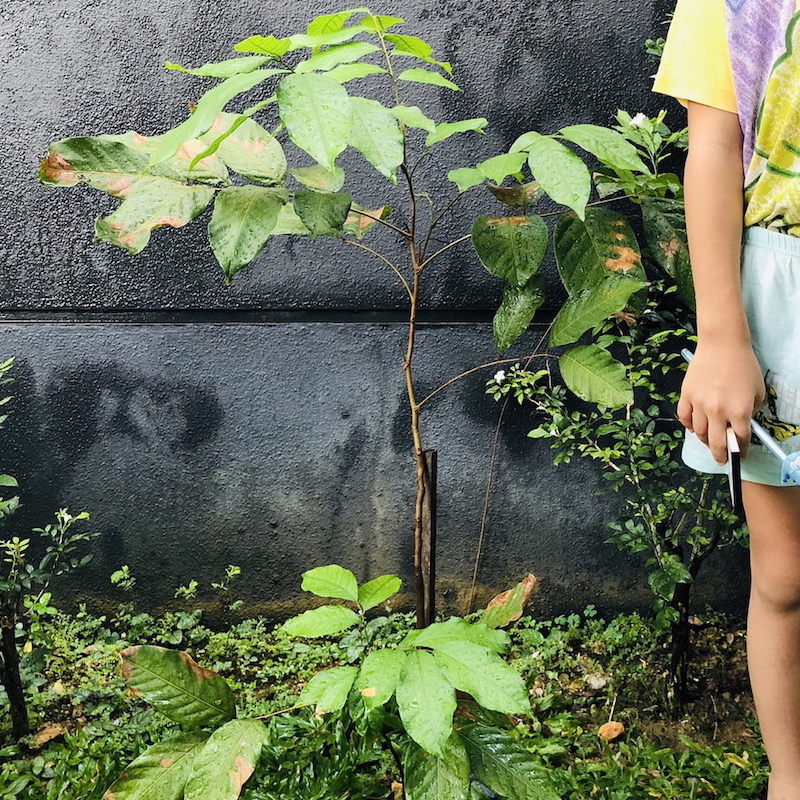
More than a year ago, little El planted a rambutan seed. When we took this photo two weeks ago, it was almost up to his shoulders. And now it’s taller than his shoulders!
He checks on it each morning and is amazed by its growth.
We tried planting other food but they attracted rats and snakes. Yikes! So we stopped planting more food.
Learning objectives:
- Science: plant parts, life cycle of a plant, food chain
4. Academic
My boys enjoy their time at home as they are stimulated with both work and play.
This keeps them meaningfully occupied and prevents restlessly, when their sports training has been significantly shortened.
4.1 School work
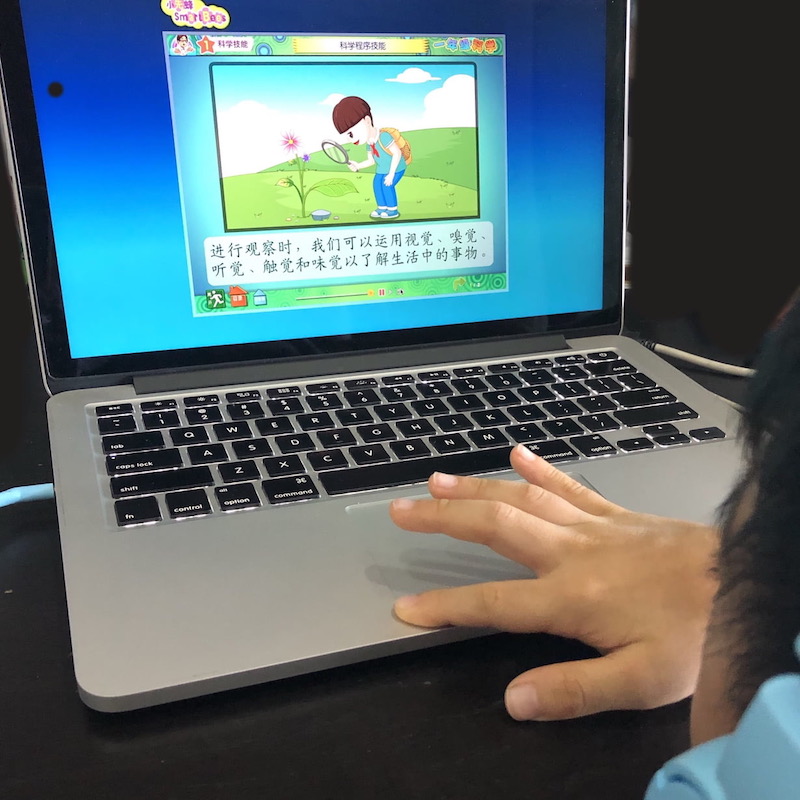
Thankfully, our school has been assigning some video lessons, quizzes and written work daily.
This keeps them moving with the school curriculum for 1 to 2 hours each morning.
4.2 Reading


With much time freed up, this is the best period to ramp up their reading.
After their morning exercise and shower, I assign them to separate areas in the house to read a chapter book of their choice while the adults shower.
For younger children, I’ll recommend board books, picture books and a systematic phonics system that includes common sight words.
4.3 Teaching a sibling
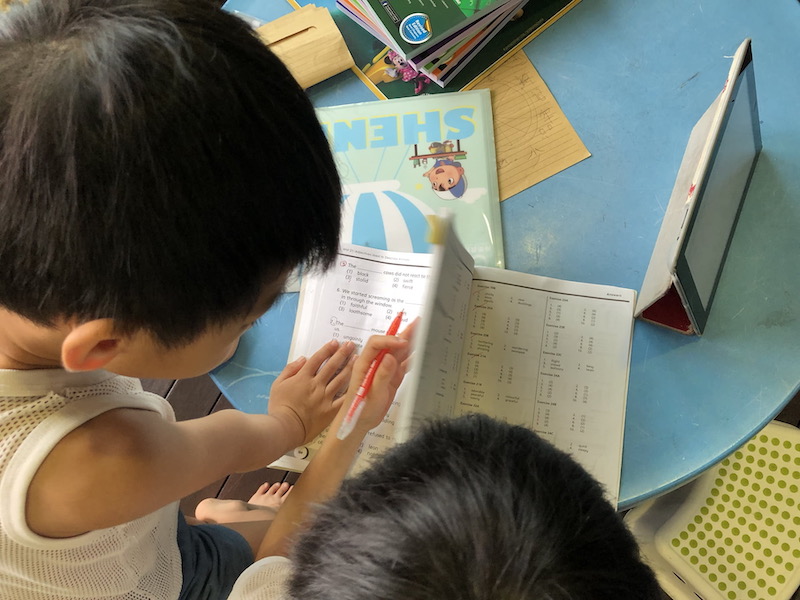
Teaching is one of the best ways to learn.
Plus it also frees up the parent’s time in a big family.
Occasionally, an older child helps to guide a younger child when I’m busy teaching another child.
4.4 Tuition online
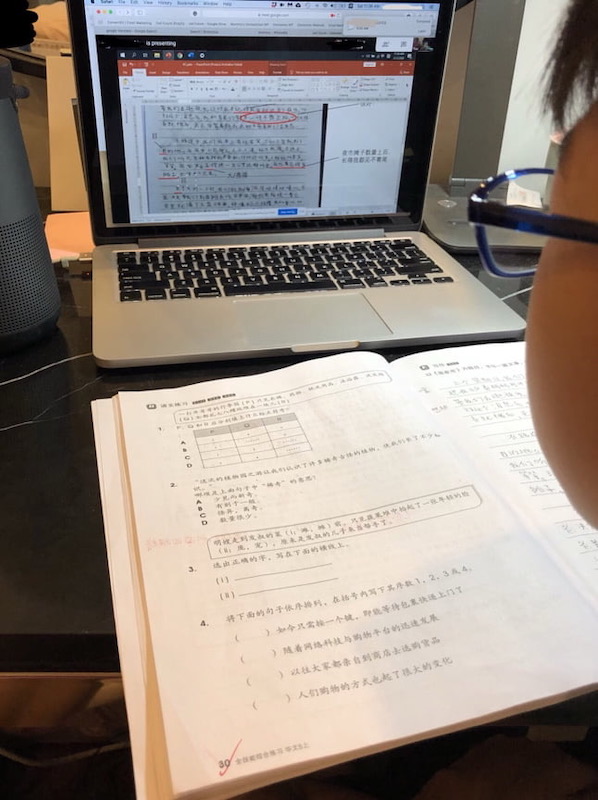
For subjects that I’m unable to teach and the school is not covering sufficiently, we rely on tutors. This means Bahasa Malaysia and upper primary Chinese essay writing.
Each child spends about 2 hours a week on online tuition.
4.5 Enrichment & Masterclasses
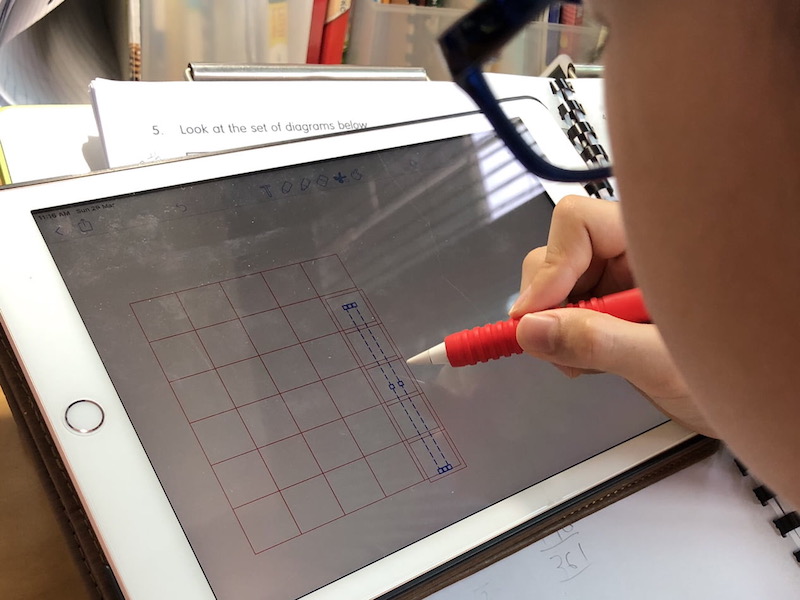
This depends on the child’s interest and abilities. My eldest child has been spending more time on Math Olympiad training with me.
His current favourite is to do advanced math straight after his school work.
With consistency, each child is able to accelerate 2 to 3 grades above his current grade level.
He also attended an online English composition writing masterclass.
5. Music
5.1 Piano online
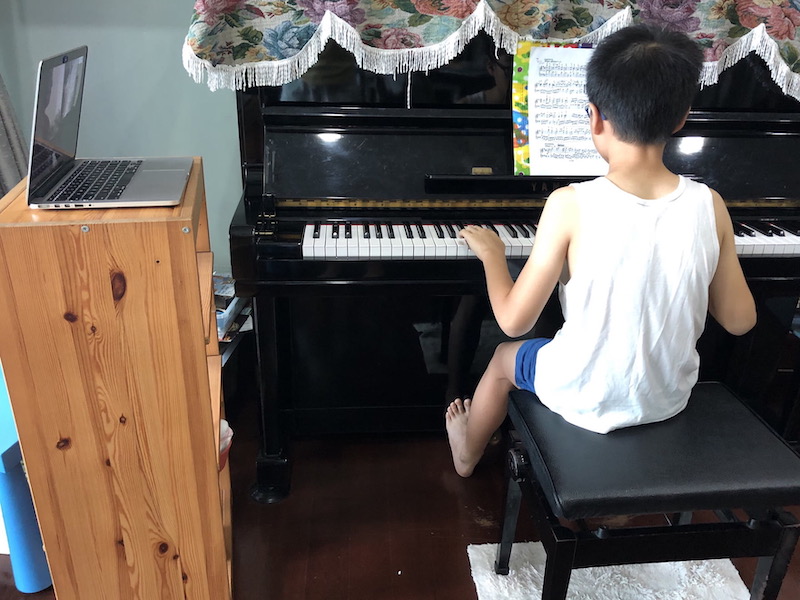
Thankfully, our piano teacher is able to continue conducting piano lessons online using Zoom.
The set-up above is very simple.
By continuing lessons, the child is able to follow up with daily practice and engage in his hobby.
5.2 Violin online
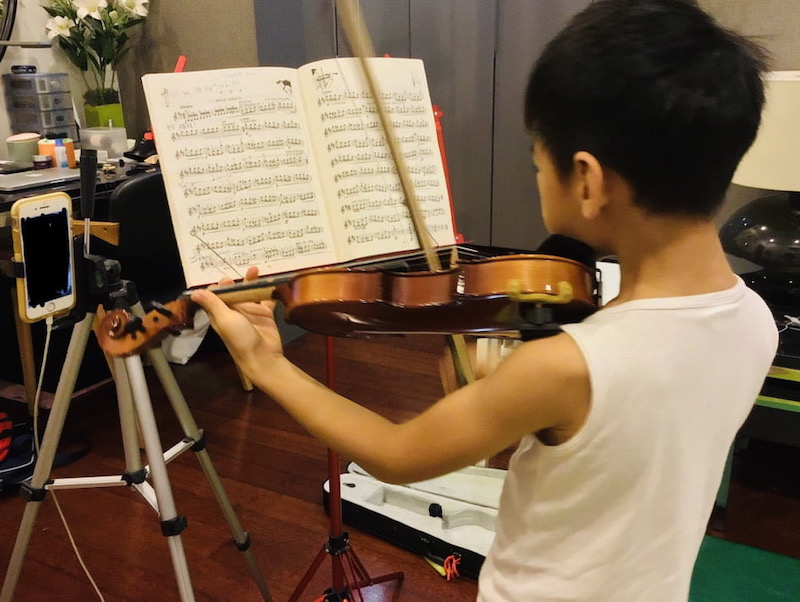
Our violin teacher prefers to use WhatsApp video call for online lessons.
The phone can be held up with a tripod or music stand.
This works for a child who can sight-read and correct his fingerings based on verbal instructions.
6. Card & Board Games
If your child is above 4 years old, then it’s a great time to introduce card and board games.
6.1 Table football
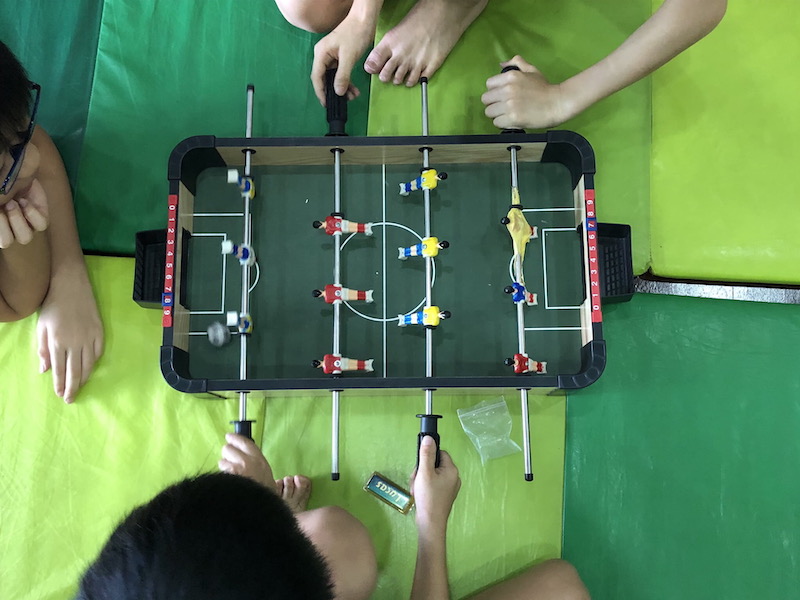
My children were busy with this toy during their first week at home — playing football with their hands instead of feet.
It’s a sturdy wooden set from Toy “R” Us and has withstood many junior leagues.
6.2 UNO
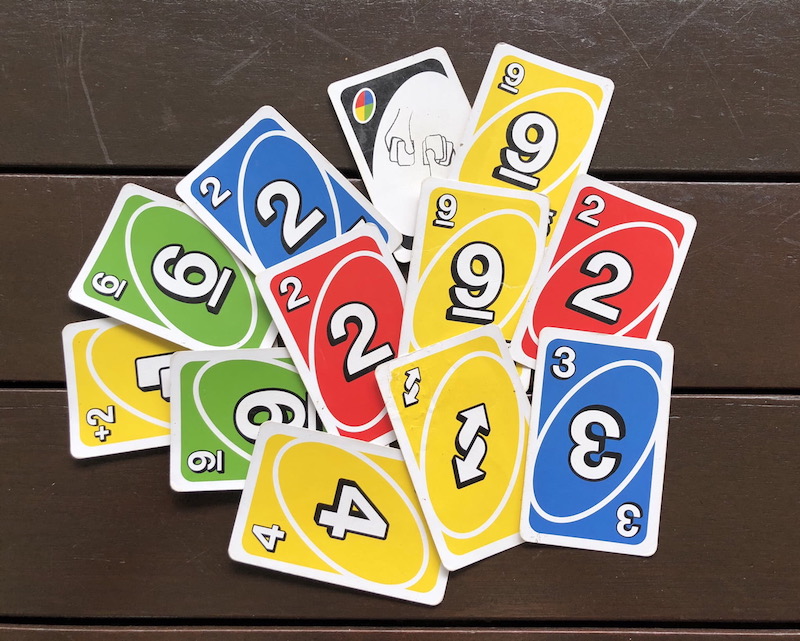
Through this simple game, my children mastered basic numbers, colours and addition +2 and +4 when little.
Learning objectives:
- Sensorial: colours
- Math: numerals, addition +2 and +4, directions (clockwise, anticlockwise)
6.3 Snake & Ladder
This is another favourite game among young children. The basic game helps them to practise counting forwards and addition.
Variations:
- use two dice
- add the numbers on the dice mentally
- add the current position and numbers on the dice (e.g. 34 + 12 = 48), instead of moving forward step-by-step
- Practise subtraction: play a reverse game (start from 100)
Learning objectives:
- Math: counting, addition, subtraction
6.4 Monopoly Deal
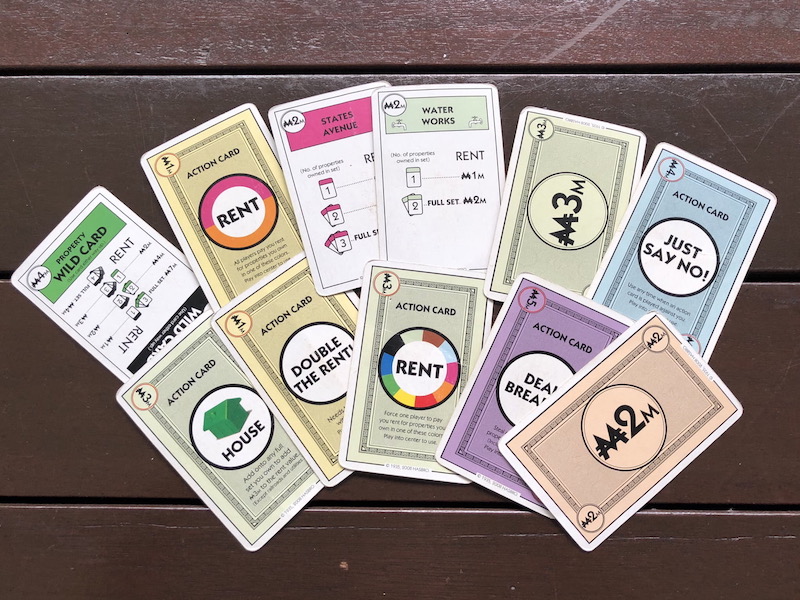
This is a card version of Monopoly and takes only about 15 minutes to complete.
It’s suitable from about 4 years old onwards, when the child can read simple words and do simple addition.
As the child grows older, she can try to strategise to win the game.
Learning objectives:
- Math: addition
- Reading
- Strategy
6.5 Connect 4
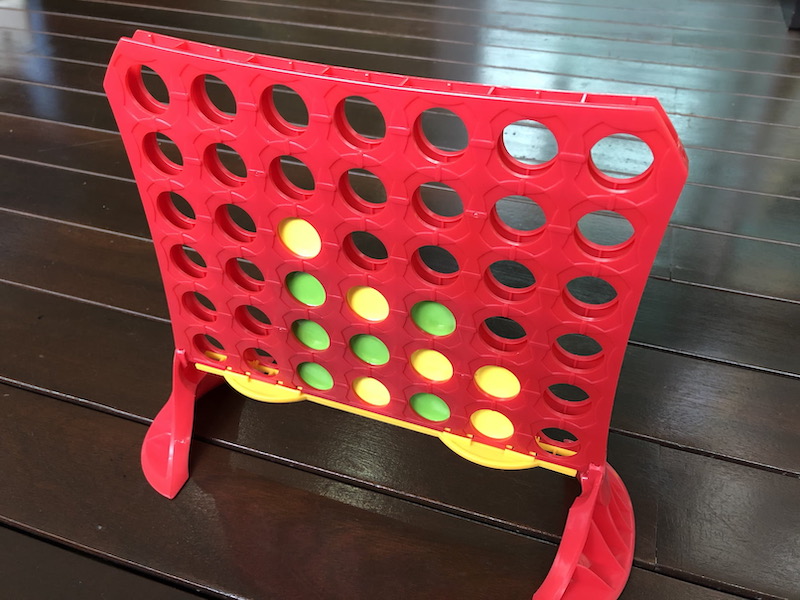
This game is like an extension of tic-tac-toe. Try to get four counters in a row (horizontally, vertically or diagonally) to win.
Learning objectives:
- Math: 2D spatial skills, logical deduction, prediction
- Strategy
6.6 Monopoly
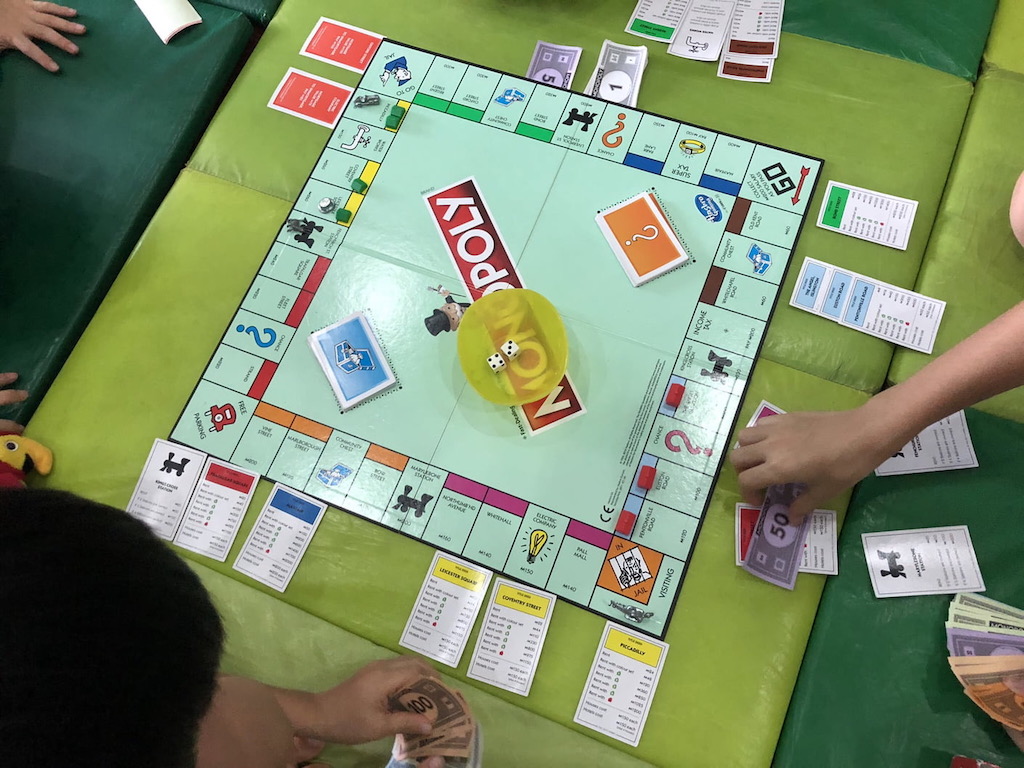
As I’m typing this post, the children are playing Monopoly with their Daddy for the umpteenth time these few weeks.
Learning objectives:
- Math: counting money, addition, subtraction
- Finance: budgeting, trading, planning
- Strategy
6.7 Checkers
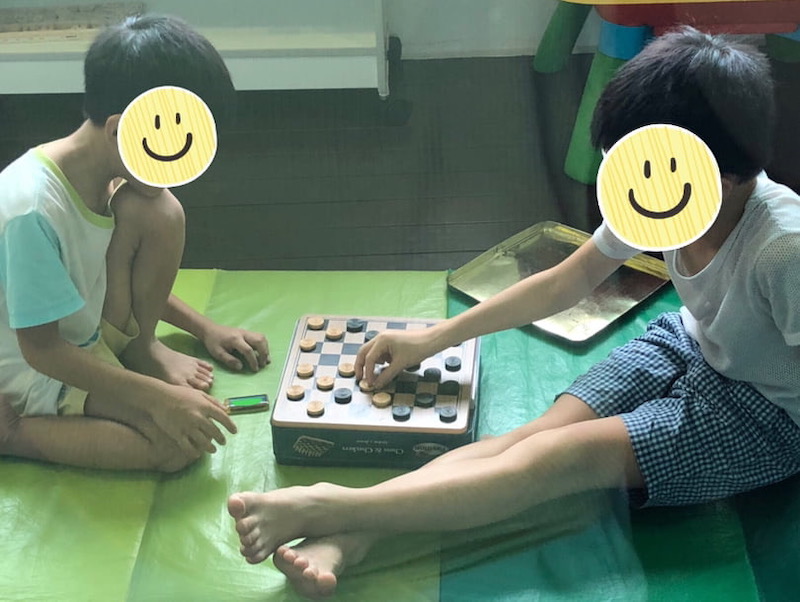
Checkers (or Dam) is a simple game that 4 to 5-year olds can start with.
My own parents played it during their dating days, and it’s the first board game that my father taught me to play.
Learning objectives:
- Math: 2D spatial skills, logical deduction, prediction
- Strategy
6.8 Chess
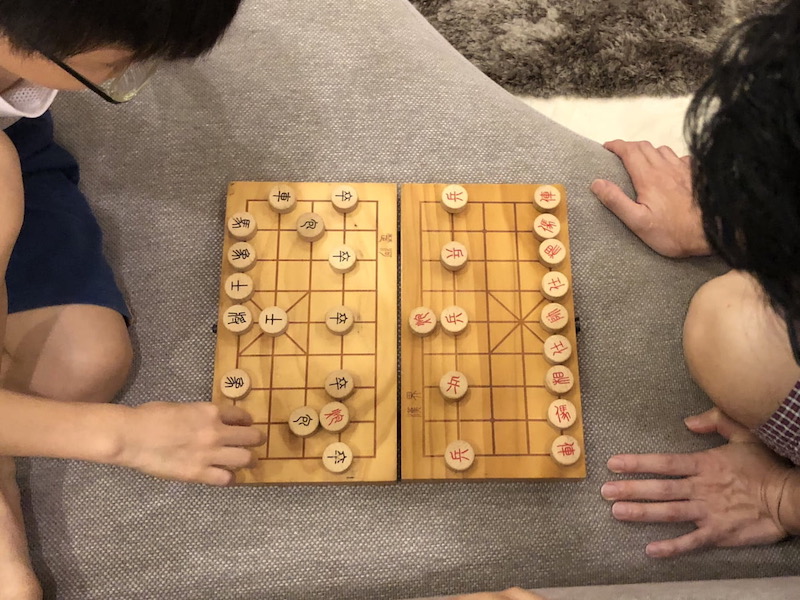
The children play Chinese chess more than English chess. Anyway, both are great games.
Learning objectives:
- Math: 2D spatial skills, logical deduction, prediction
- Strategy
6.9 Blokus Duo
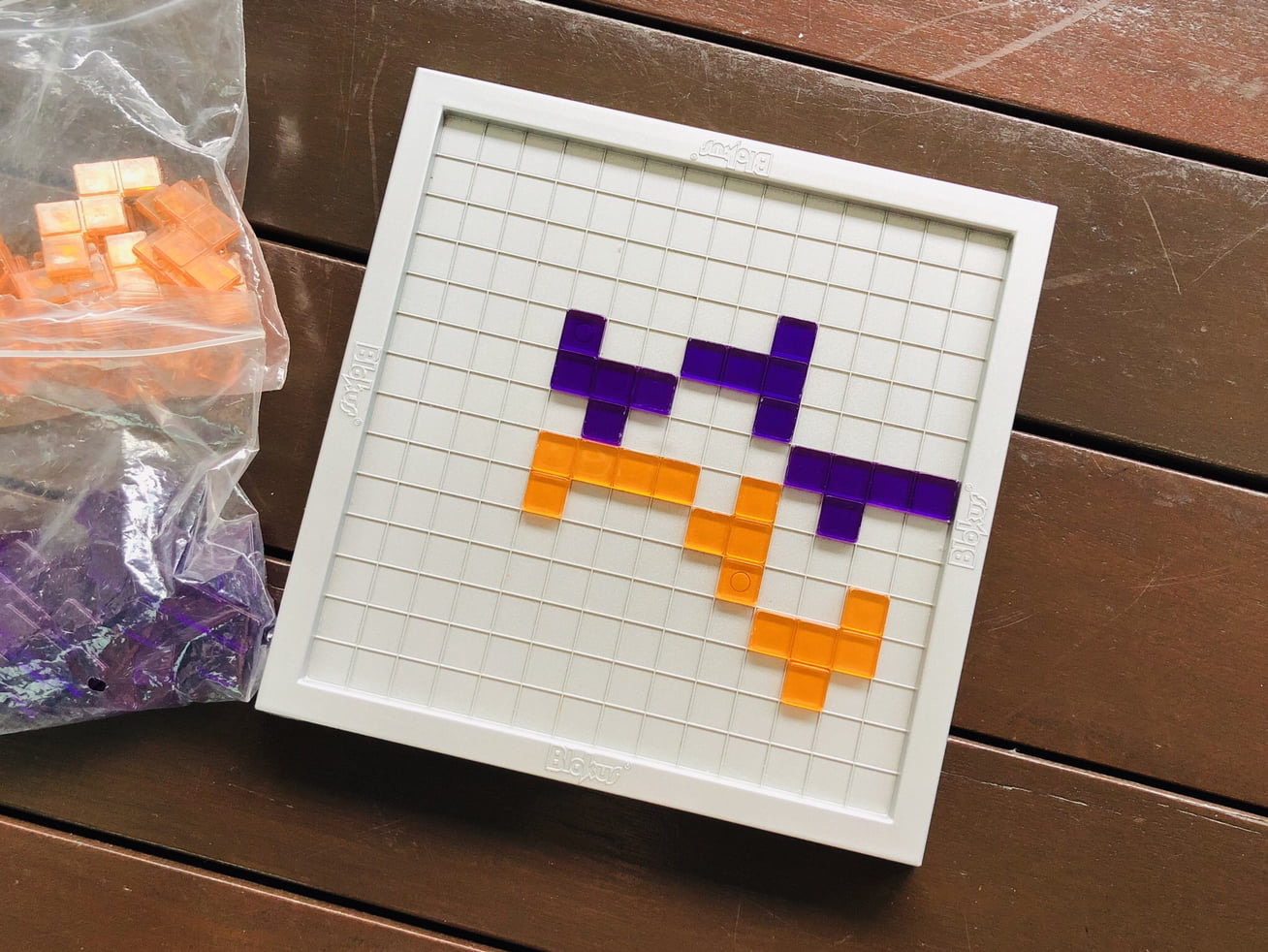
I was first drawn to this game because the pieces remind me of Tetris!
It’s a simple game to learn from about 5 years old and strengthens the child’s spatial skills, which helps in learning math.
Imagine rotating each piece in your hand and trying to optimise your territory.
Learning objectives:
- Math: 2D mental rotation, logical deduction, prediction
- Strategy
6.10 Catan Card Game
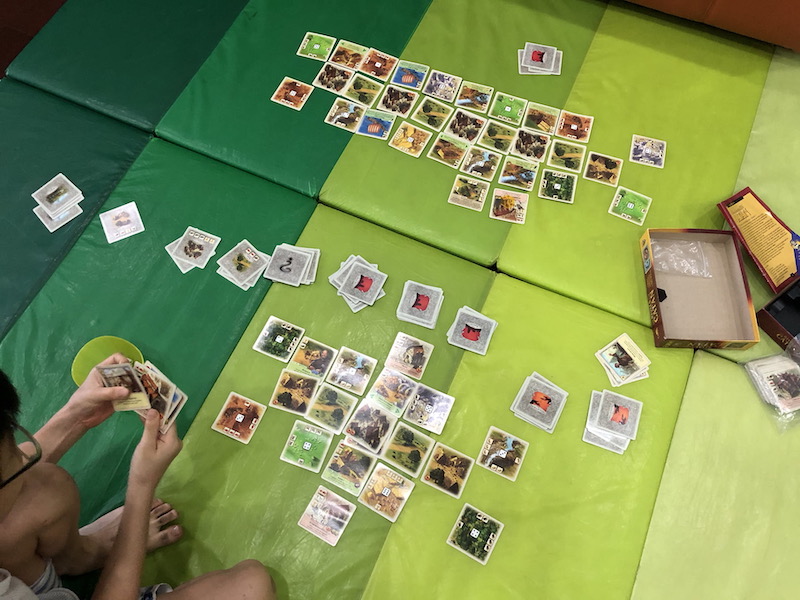
Catan Card Game is suitable from about 8 years old onwards.
When I first played the game with my eldest child, I kept losing and didn’t win until about the tenth game!
There are various resources to manage, events to prepare against, and things to buy in order to gain enough victory points to win.
Quite mind-boggling in the beginning.
Yet very interesting with variations in the game set. Sure to keep the children meaningfully busy.
Learning objectives:
- Language: reading & comprehension
- Math: logical deduction, prediction
- Strategy
6.11 Risk
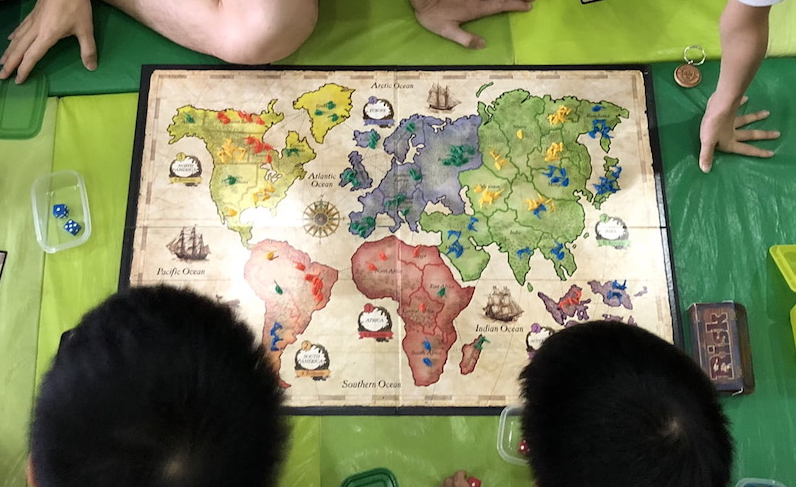
Put together army troops trying to win terroritories, and you’ve got the guys hooked for hours.
Learning objectives:
- Geography: continents, countries (not fully accurate)
- Math: logical deduction, prediction
- Strategy
Phew… that was a long compilation! I hope you’ve gotten some fresh ideas and have a meaningful time at home.
It is challenging to stay at home with children for weeks. Let’s make the best out of it!
For all learn-at-home resources related to Covid-19 school closure, go to our series at:
[Learn at Home] During Covid-19 School Closure

